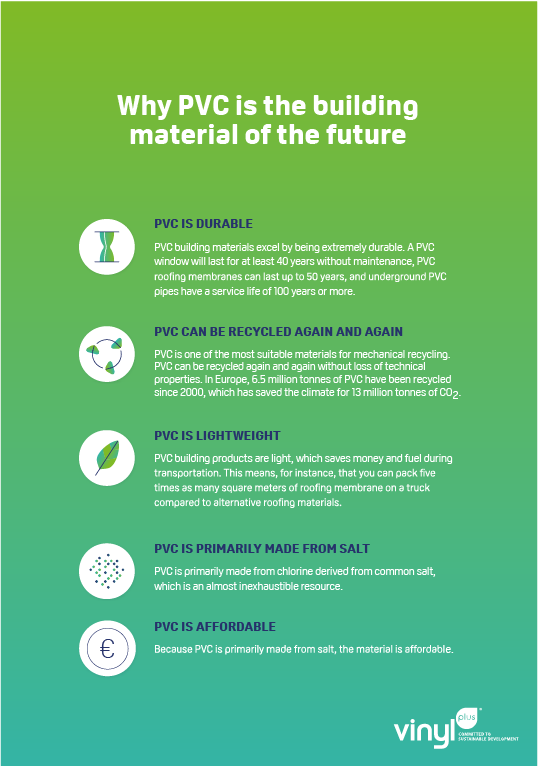Building & Construction
Energy saving PVC windows
Windows are a major source of heat gain and heat loss in both residential and commercial buildings. Energy efficient windows are much needed when renovating or building. The frame of the window plays a decisive role in promoting energy and cost-efficient thermal insulation.
PVC window frames have many advantages over traditional materials. PVC window profiles have three times the heat insulation efficiency of aluminium profiles, can last for more than 50 years with minimum maintenance, and are more affordable than the alternatives.
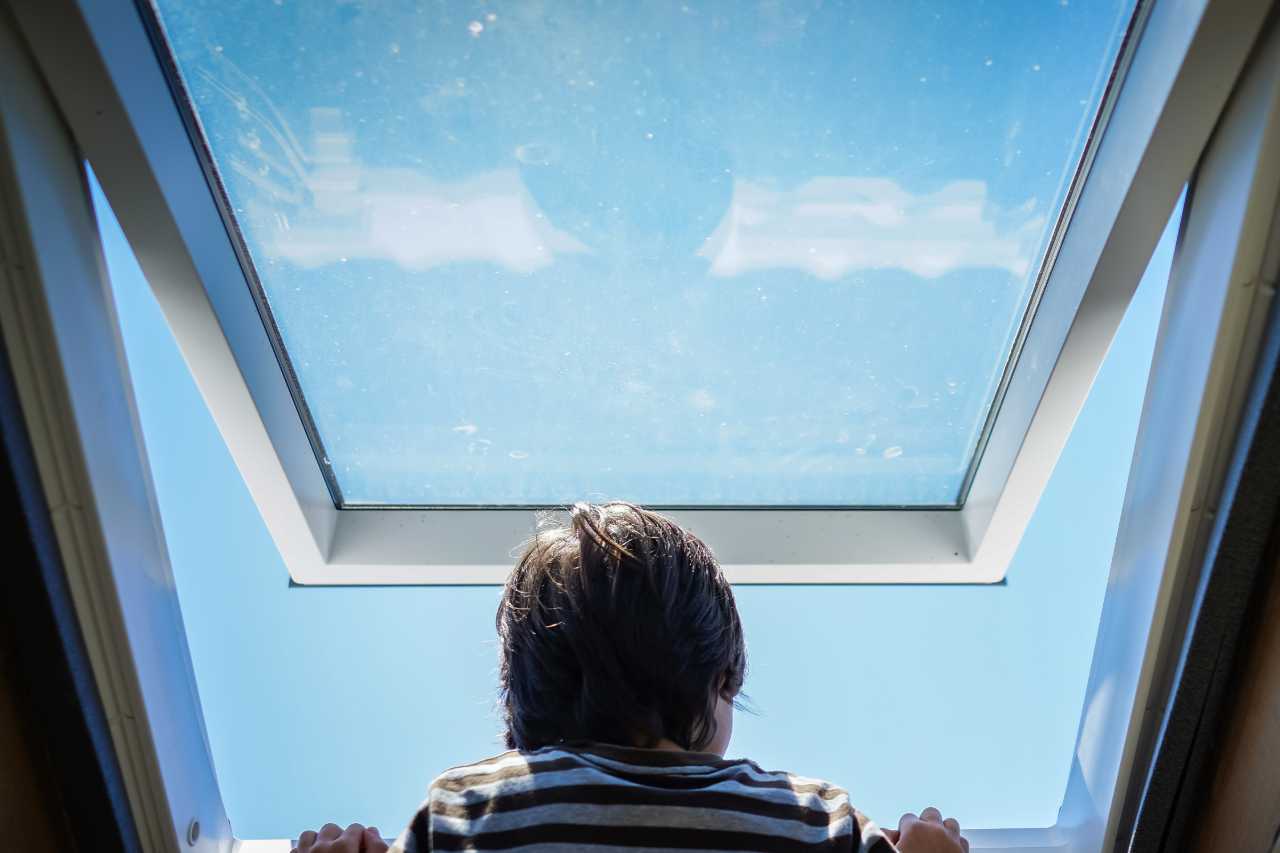
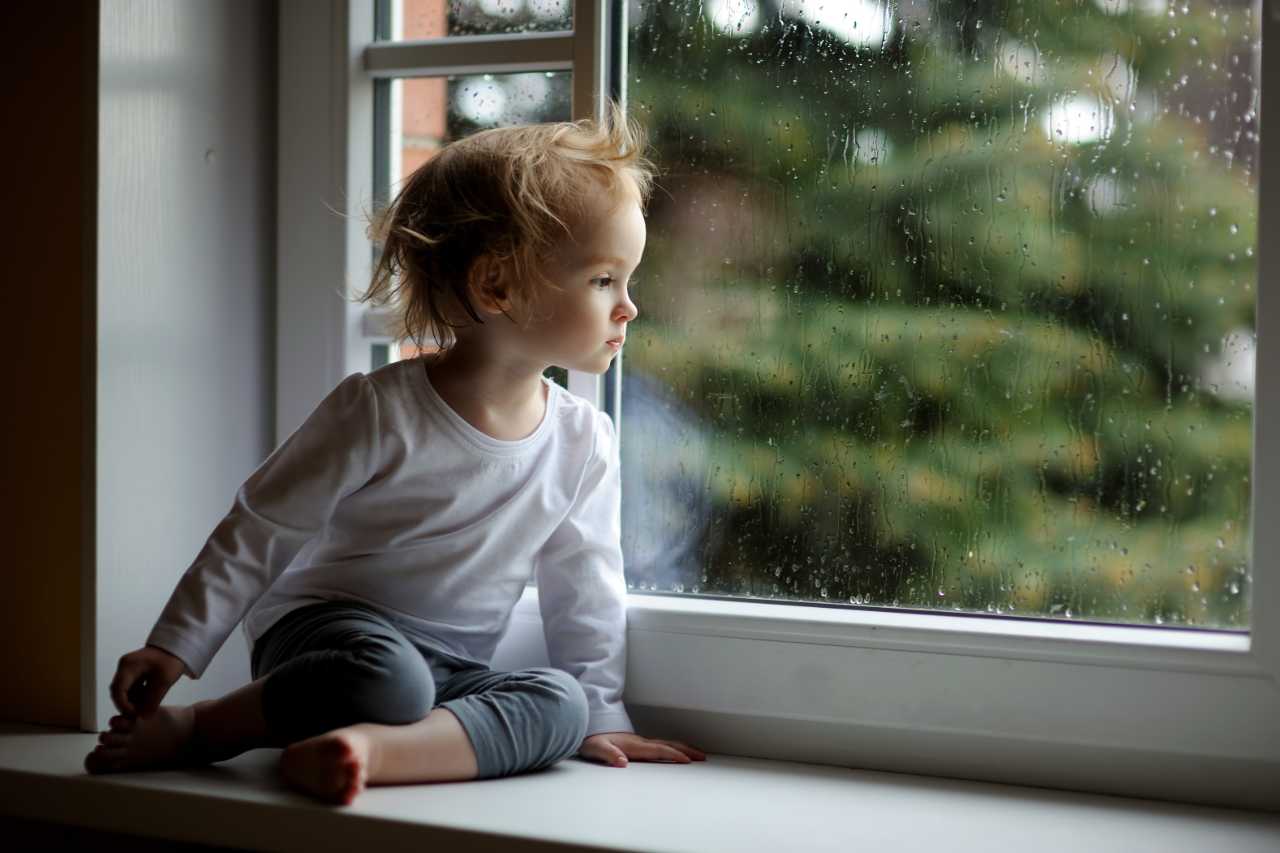
Low cost is key to tackling energy poverty and achieving access to healthy housing, making a more equal society possible. This is also an element in the EU Commission’s Renovation Wave, which aims to double annual energy renovation rates during the next decade.
With the expected higher renovation rate of 2%, millions of old PVC windows will be available for recycling.
This means that more recycled PVC can be used as a raw material for the production of new PVC profiles, so that less virgin material has to be produced, thus reducing the primary energy demand in manufacturing.
PVC window frames are also fit for the circular economy. They are 100% recyclable, and can be recycled up to seven times without loss of quality. New window profiles can contain as much as 70% of recycled PVC. Compared to profiles with 100% virgin PVC, they can achieve savings of up to 50% in energy, over 60% in air emissions and more than 60% in water emissions.
Around 400,000 tonnes of PVC window frames were recycled in 2022 through VinylPlus®, the European PVC industry’s commitment to sustainable development. As 1 kg of recycled PVC can spare the emission of 2 kg of CO2, the carbon savings equate to 800,000 tonnes.
By choosing PVC windows with the VinylPlus® Product Label, customers are sure to choose the most sustainable option on the market. The Label ensures that strict sustainability requirements are met, including responsible sourcing and use of additives.
See the growing inventory of Vinyl Verified products.
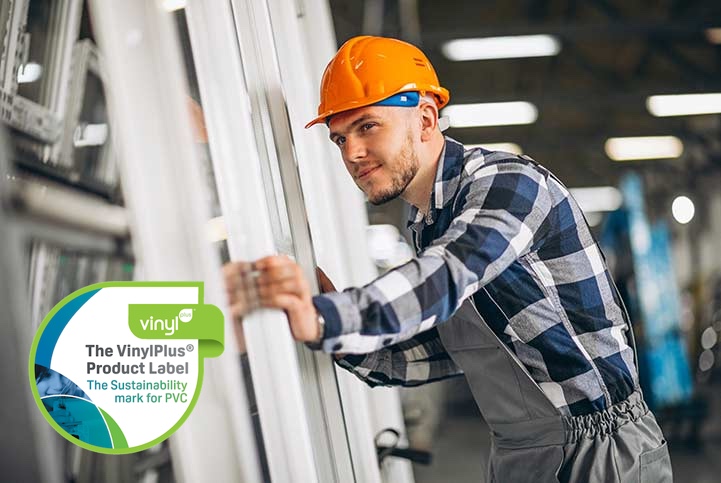

PVC cables power up our digital lives
Covid-19 has sped up the digital transformation of Europe. As schools and workplaces have experienced recurrent lockdowns, online learning and working from home has become the daily routine for millions of Europeans, not to mention how remote working will become the norm for many companies and work forces globally. As the most used material for wire and cables, PVC makes digital life possible.
PVC is found in a wide variety of applications, from underground power cables and electrical cables to fibre optic cables for high speed internet. Almost all major producers of consumer electronics use flexible PVC in their products. Power cables made of PVC have been the industry standard to plug in personal computers and electronic screens since the 1980s. Today, PVC cables are also used to charge the latest generation smartphones, tablets and smartwatches, and many electric cars.

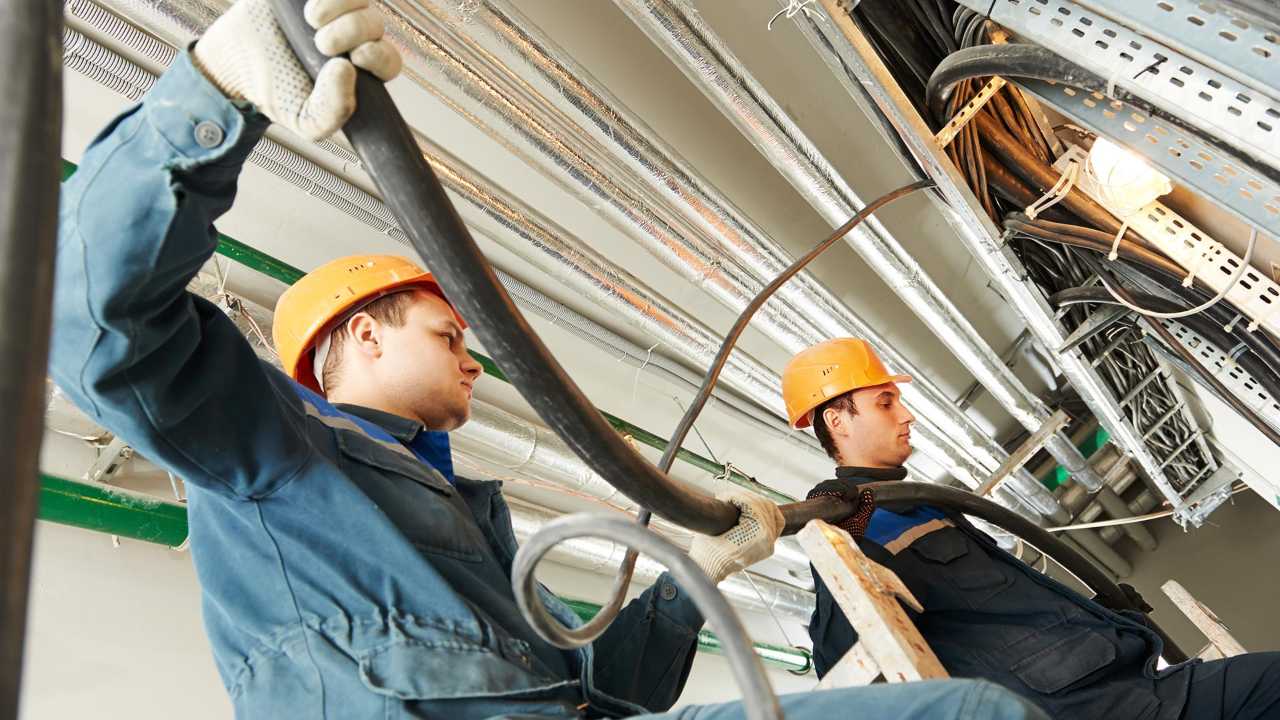
High safety standards must be maintained in all cables whether they are used indoor or outdoor. PVC gives insulation, strength and protection at a wide range of temperatures. This is crucial in the case of inner electric wires, cables and fibre optics used at very low temperatures, for instance when buried underground or below the sea, and at very high ones, when located close to powerful engines as it is the case in automotive applications.
Importantly, PVC is inherently fire-retardant and can reduce or suppress combustion in case of fires. PVC is also a chosen material for the electrical conduits that protect the wires and cables inside buildings, as well as cable ducts, tape, and other applications electricians rely on. PVC wires and cables can last up to 80 years under normal conditions of use. They are easily recyclable and since 2000 more than 1.6 million tonnes have been recycled through VinylPlus®, the European PVC industry’s commitment to sustainable development.
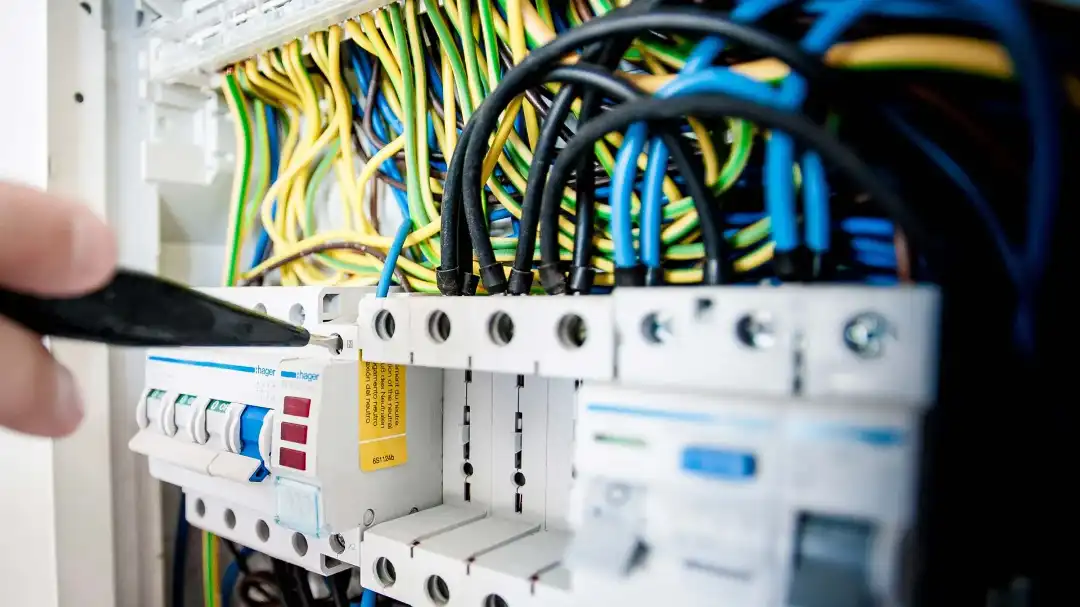
Resilient flooring in all colours
Vinyl floors are highly durable, and can be used for more than 20 years without deteriorating in quality. In Bromma Airport outside Stockholm, Sweden, the vinyl flooring was laid more than 70 years ago and is still in function. This shows that vinyl is indeed long-lasting. PVC is therefore typically used as flooring in buildings requiring a combination of functionality, durability, and aesthetics. This applies, for instance, to hospitals, laboratories, care homes, industrial buildings, offices, schools, shops and other buildings with heavy traffic.

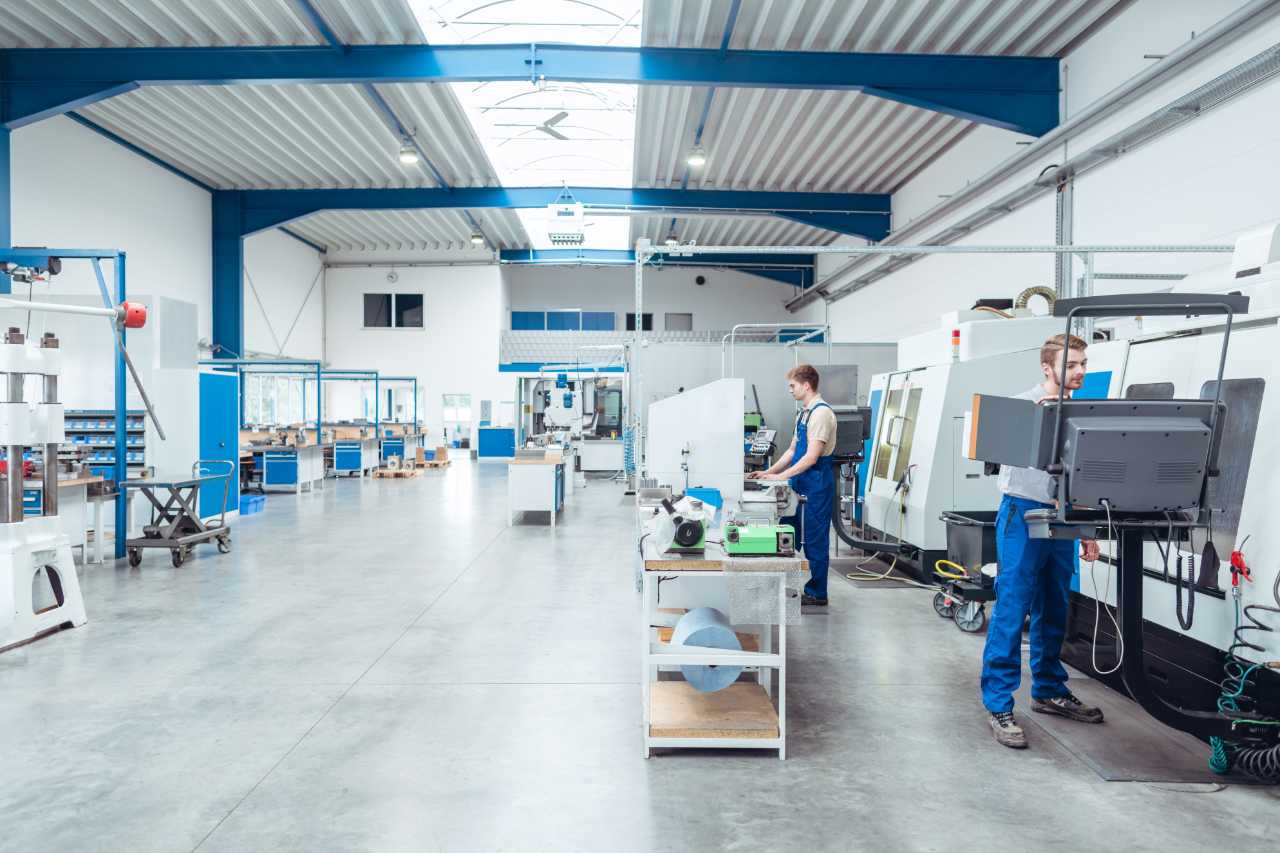
Floors in manufacturing industries and warehouses must also be able to withstand wear and tear from the constant flow of forklift trucks and other heavy machines. Vinyl flooring is up to the task for many years. Further, many industries have very specific requirements that are met by using vinyl flooring, such as the electronics industry where anti-static vinyl flooring is used for static discharge.
Floors in the health sector and care homes have particular high demands. They are used 24 hours a day, all year round. At the same time, the hygiene requirements are extremely strict, and the architecture is expected to have a positive impact on the staff’s working environment and to contribute to good treatment and care. Since comfort and safety for patients and residents are paramount, vinyl flooring is ideal due to its shock-absorbent properties. Furthermore, vinyl flooring is resistant to chemicals and exceedingly easy to clean, making it the ideal choice for flooring in the health and social care sector.
What is Ramboll saying?
PVC roofing membranes keep buildings dry
Water ingress has historically been an issue for flat roofed buildings. No roof is ever completely flat, causing water to pond in certain areas. Eventually this water finds its way through to the building below. PVC was first introduced as a roofing membrane material in the 1960s, and has become a material of choice due to its durability for 40 years or more and resistance to leaks. PVC roofing membranes also bring benefits for the climate thanks to their low weight, which reduces transportation, and recyclability.
It has been demonstrated that PVC roofing membranes can reduce the so-called heat island effect, thanks to their cooling properties. Solar panels can be integrated with PVC roofing membranes. The reflective properties of light-colored PVC membranes enhance solar panel efficiency by approximately 15% compared to other roofing materials.
What is Ramboll saying?
What is Ramboll saying?
PVC roofing membranes are easy to install: they are simply welded together on the roof structure with use of hot air, which eliminates the risk of fire. The welds create an extremely watertight roof membrane, eliminating the need for tape and other types of joints which increase the risk of leaks. PVC roofing membranes are also wind-resistant. This means that they are resistant to extreme weather conditions, which are gradually becoming a more common occurrence all year round.
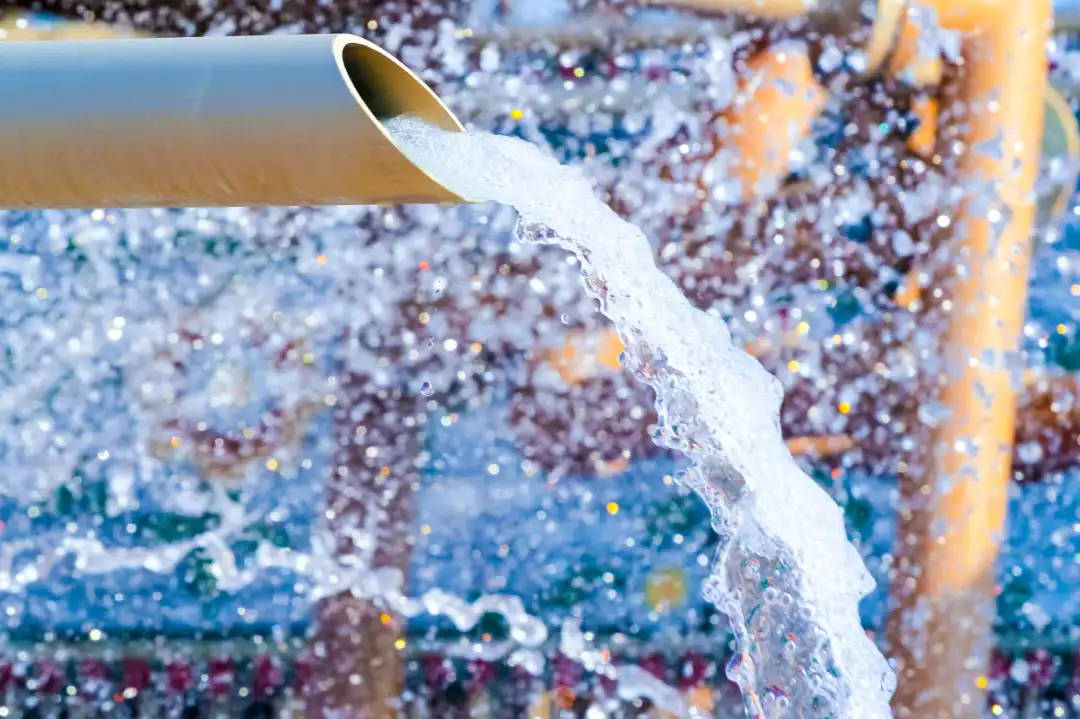
Clean water and sanitation with PVC pipes
When we turn on the tap or flush the toilet, we rarely think of the hidden infrastructure that transports the water. Yet hidden in the walls, below ground and under the sink, are millions of kilometres of pipes that connect Europe’s buildings to the water service networks. Selecting the right materials for the water networks is crucial to preserve drinking water quality, avoid water loss, and elude the risk of groundwater and soil contamination due to pipeline leaks from sewage. The pipes must be safe, durable, cost-efficient, recyclable and have a low environmental footprint. PVC meets all demands, which is why the plastic is a chosen material for pressure pipes for drinking water, sewage and drainage, hot and cold water plumbing, fire sprinklers, and many other piping applications.
PVC is first of all the perfect partner to preserve drinking water quality, as the material’s inertness ensures that bacterial growth and migration of substances are negligible. PVC pipes are very durable, with an expected service life of 100 years or more for underground pipes. Utilities are also saving money when choosing PVC pipes, as the Total Cost of Ownership from installation over use to dismantling is lower than non-plastic alternatives. PVC pipes are fit for the circular economy. They can be recycled many times without loss of technical properties, and many new pipes contain recycled material from pipes and many other PVC products. Independent comparative LCA studies confirm that PVC pipes have a lower environmental footprint than ductile iron, cement and other non-plastic materials when it comes to global warming potential and other impacts.
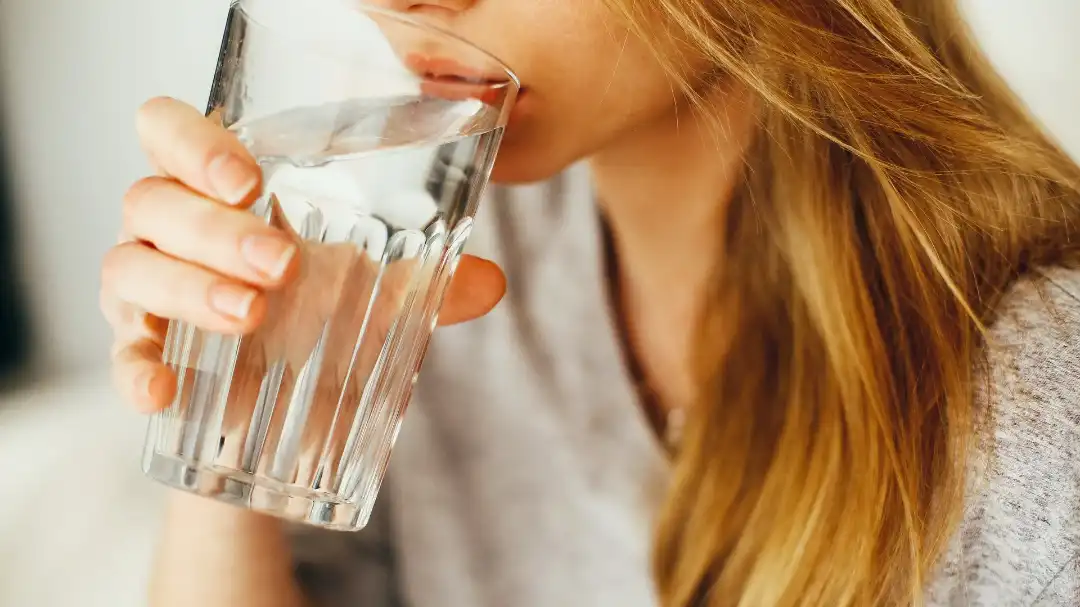
The VinylPlus® Product Label recognised by public and private buyers
Choosing the most sustainable building products is no easy task. The VinylPlus® Product Label is a guiding tool for public and private buyers looking to select PVC products with the best sustainability profile. The scheme has been developed by VinylPlus in partnership with the Building Research Establishment and The Natural Step. The Label ensures that the products live up to strict sustainability requirements such as responsible sourcing of PVC resin and additives, controlled loop management and recycling, and sustainable energy policies. So far 130 building products manufactured at 19 sites in Europe by 11 companies have been Vinyl Verified.

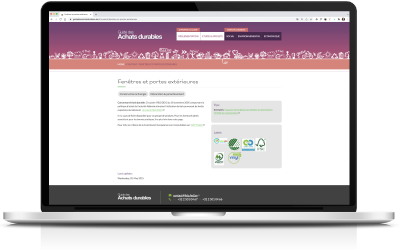
The VinylPlus® Product Label is growing in recognition as a label for sustainable public and private procurement. In Belgium, for instance, it is listed in the official guide for public procurers alongside the Nordic Swan, FSC, PEFC and other well-known eco-labels.
The VinylPlus® Product Label is taken as reference in new minimum prescriptions for responsibly sourced plastic Building and Construction products in Walloon, Belgium. Specifiers will be able to request Vinyl Verified® PVC window and door profiles using a sentence template.
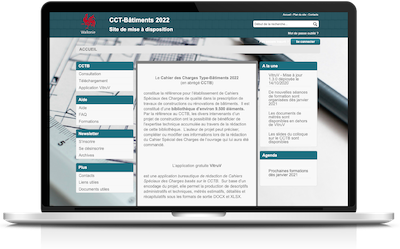
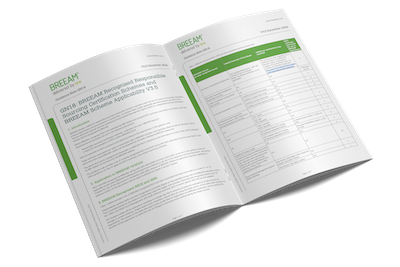
The VinylPlus® Product Label is also the first scheme for plastic building products to be recognised in BREEAM® and Home Quality Mark® (HQM). BREEAM is currently the world’s most used sustainability assessment method for measuring the environmental, social and economic sustainability performance of buildings. It applies to planning projects, infrastructures, and buildings.

